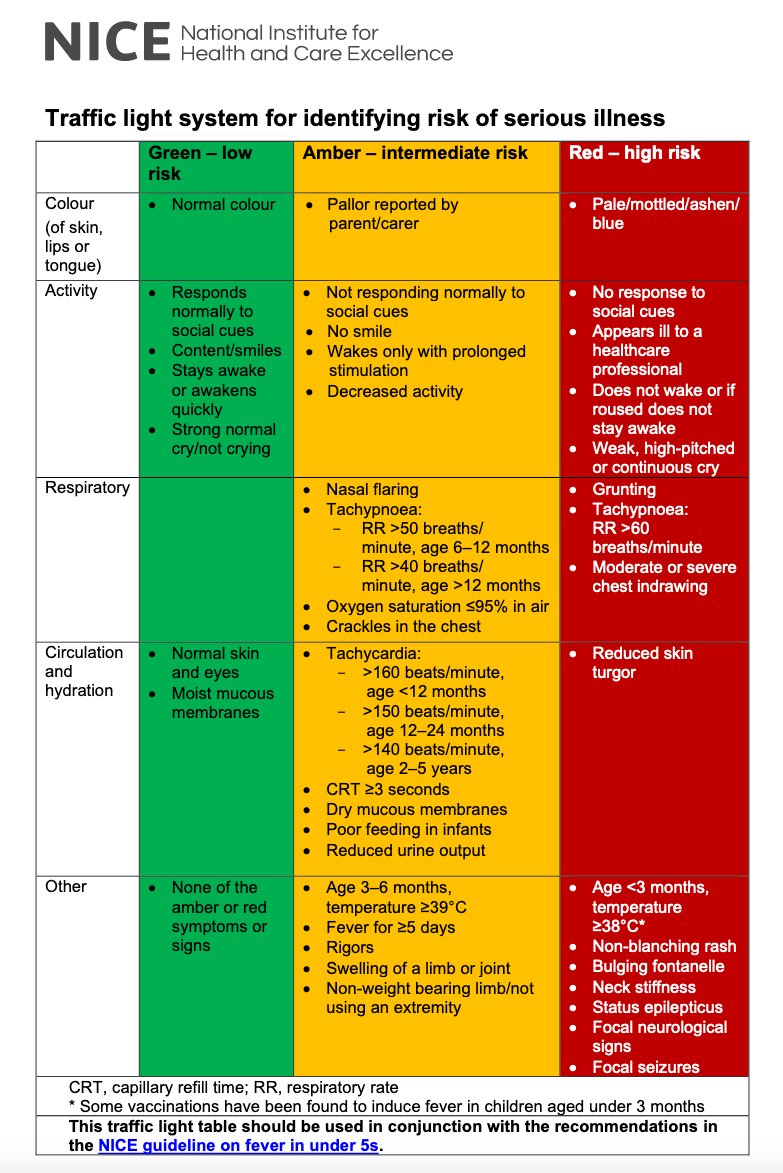Infection of the bronchioles

Causes/Factors
- Respiratory syncytial virus
- Occurs in children under 1
- Most common in children under 6 months old
- Ex-premature babies
- Any chronic lung disease
Symptoms
- Coryzal symptoms - running/snotting nose, sneezing, mucus in throat and watery eyes
- Signs of respiratory distress
- Poor feeding
- Apnoeas
Signs
When a virus affects adults the swelling and mucus are in proportion to the bronchioles so little noticable effect on breathing. In infants the smallest amount of inflammation can cause partial obstruction - wheee and crackles on auscultation
- Dyspnoea
- Tachypnoea
- Raised RR
- Use of accessory muscles
- Nasal flaring
- Head bobbing
- Tracheal tugging
- Cyanosis
Management
Most infants can be manage at home with advice about when to seek further attention. Reason to admit:
- Aged under 3 months or any pre-existing condition
- 50-75% less of their normal milk intake
- Clinical dehydration
- RR above 70
- Oxygen sats below 92%
- Moderate to severe respiratory distress - deep recessions or head bobbing
- Apnoeas
- Patients not confident in their ability to manage at home
In hopsital
Typically patients only require supportive management
- Ensure adequate intake - orally, via NG or IV fluids. Important to avoid overfeeding as this will restrict breathing
- Saline nasal drops and suctioning to remove secretions - particularly prior to feeding
- Oxygen - titrate up to 92%
- Ventilatory if required - step-wise progression Little evidence for nebulised Salbutamol, bronchodilators, steroids or antibiotics
Palivizumab
- Monoclonal antibody that targets RSV
- Monthly injection given to prevent bronchiolitis
- Given to high risk babies - ex-premature and congenital heart disease
Complications/red Flags
- Rising shows that the airways have collapsed
- Falling pH shows that the is building up and not able to buffer the acidosis - type 2 Respiratory Failure